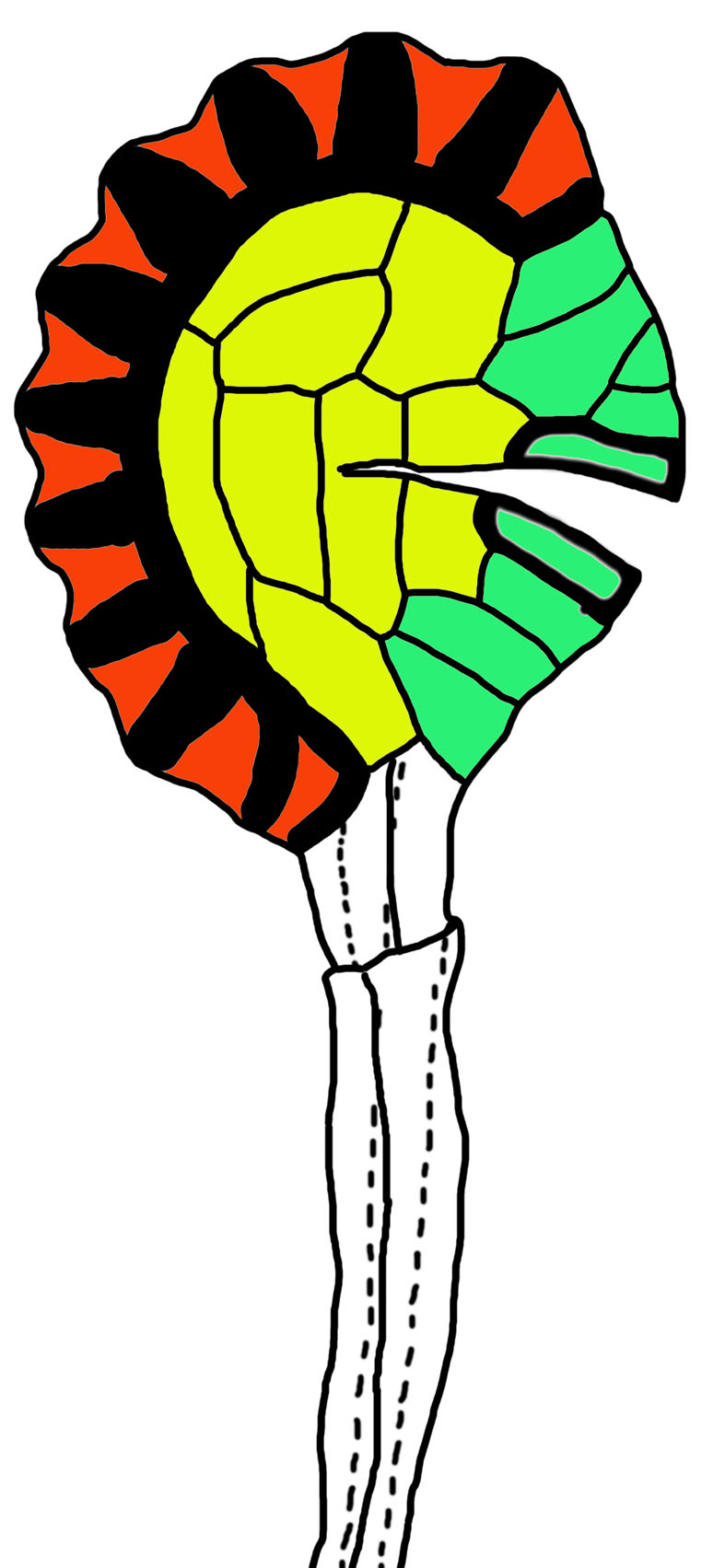

# Co-first authors
Received date: 2016-05-06
Accepted date: 2016-07-12
Online published: 2017-05-27
Sporangia are propagative organs of ferns and their morphology has great significance for fern taxonomy and phylogeny. In this study, we used sodium hypochlorite solution to observe fern sporangia. By this process, we could obtain sporangia photos under light microscopy. We studied the sporangia morphology of 13 species belonging to four genera of the fern family Lindsaeaceae and found that the shape of the capsule is ellipsoidal, with a vertical annulus; the pedicel is composed of three rows of cells. The cell number annulus is reduced in Odontosoria, Osmolindsaea, Tapeinidium and Lindsaea, whereas the volume of capsule and cell number of stomium and capsule are reduced in Odontosoria, Tapeinidium, Osmolindsaea and Lindsaea. As well, the same genus shows more differences between species, such as Odontosoria biflora and O. chinensis as well as Osmolindsaea odorata and Os. japonica, but less difference between the genera of Tapeinidium and Lindsaea. Studies of sporangia morphology will be useful for further research in other groups of ferns.

Hui Shang , Xile Zhou , Yuehong Yan , Dongmei Jin , Yicheng Liu . Sporangia Morphology of Ferns I. Lindsaeaceae[J]. Chinese Bulletin of Botany, 2017 , 52(3) : 322 -330 . DOI: 10.11983/CBB16104
| [1] | 刘红梅, 王丽, 张宪春, 曾辉 (2008). 石松类和蕨类植物研究进展: 兼论国产类群的科级分类系统. 植物分类学报 46, 808-829. |
| [2] | 《中国植物志》编辑委员会 (1959). 中国植物志(第2卷) . 北京: 科学出版社. pp. 256-278. |
| [3] | 朱维明, 张光飞, 陆树刚, 和兆荣 (2006). 云南植物志(第20卷). 北京: 科学出版社. pp. 230-235. |
| [4] | Foster AS, Gifford EM (李正理, 张新英, 李荣敖, 崔克明译) (1983). 维管植物比较形态学. 北京: 科学出版社. pp. 55- 64; 238-240. |
| [5] | Bierhorst DW (1971). Morphology of Vascular Plants. New York: The Macmillan Company. pp. 291-326. |
| [6] | Bower FO (1923). The Ferns (Filicales) I. London: Cambridge University Press. pp. 250-255. |
| [7] | Bower FO (1926). The Ferns (Filicales) II. London: Cambridge University Press. |
| [8] | Bower FO (1928). The Ferns (Filicales) III. London: Cambridge University Press. pp. 33-34; 67-68. |
| [9] | Christenhusz MJ, Chase MW (2014). Trends and concepts in fern classification.Ann Bot 113, 571-594. |
| [10] | Christensen C (1938). Filicinae. In: Verdoorn F, ed. Manual of Pteridology. The Hague: Martinus Nijhoff. pp. 522-550. |
| [11] | Holttum RE (1947). A revised classification of leptosporangiate ferns.Bot J Linn Soc 53, 123-159. |
| [12] | Kramer KU (1957). A revision of the genus Lindsaea in the New World with notes on allied genera. Acta Bot Neerland 6, 97-281. |
| [13] | Kramer KU, Green PS (1990). Pteridophytes and gymnosperms. In: Kubitzki K, ed. The Families and Genera of Vascular Plants. Berlin: Springer-Verlag. pp. 89-93. |
| [14] | Lehtonen S, Tuomisto H, Rouhan G, Christenhusz MJ (2010). Phylogenetics and classification of the pantropical fern family Lindsaeaceae.Bot J Linn Soc 163, 305-359. |
| [15] | Lellinger DB (1985). A Field Manual of the Ferns and Fern-allies of the United States and Canada, Vol.3. Wash- ington: Smithsonian Institution Press. |
| [16] | Noblin X, Rojas NO, Westbrook J, Llorens C, Argentina M, Dumais J (2012). The fern sporangium: a unique ca- tapult.Science 335, 1322. |
| [17] | Poppinga S, Haushahn T, Warnke M, Masselter T, Speck T (2015). Sporangium exposure and spore release in the peruvian maidenhair fern (Adiantum peruvianum, Pteridaceae). PLoS One 10, e0138495. |
| [18] | Presl CB (1836). Tentamen pteridographiae, seu, genera filicacearum praesetim juxta venarum decursum et distributionem exposita. Prague: A. Haase. |
| [19] | Pryer KM, Schuettpelz E, Wolf PG, Schneider H, Smith AR, Cranfill R (2004). Phylogeny and evolution of ferns (monilophytes) with a focus on the early leptosporangiate divergences.Am J Bot 91, 1582-1598. |
| [20] | R Core Team (2015). R: a Language and Environment for Statistical Computing. Vienna: R Foundation for Statistical Computing. URL . |
| [21] | Smith AR, Pryer KM, Schuettpelz E, Korall P, Schneider H, Wolf PG (2006). A classification for extant ferns.Taxon 55, 705-731. |
| [22] | Tryon R, Tryon A (1982). Ferns and Allied Plants with Special Reference to Tropical America. New York: Springer- Verlag. |
| [23] | Wu ZY, Raven P, Hong DY (2013). Flora of China, Vol.2-3(Pteridophytes). Beijing and St. Louis: Science Press & Missouri Botanical Garden Press. pp. 139-146. |
/
| 〈 |
|
〉 |